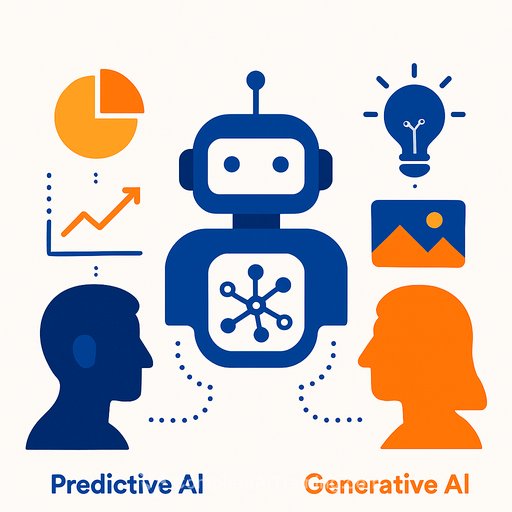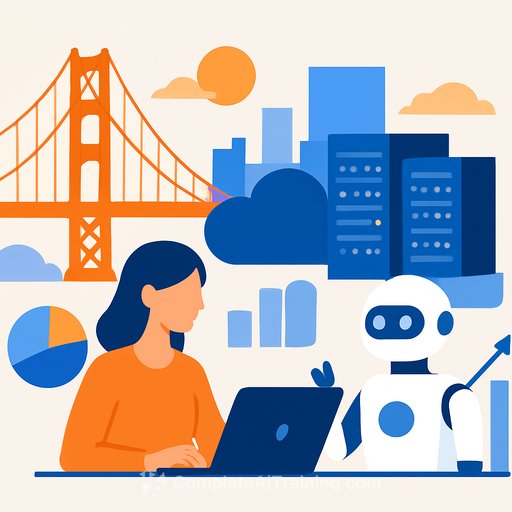Predictive AI vs Generative AI: Understanding the Differences
Artificial intelligence is becoming a bigger part of everyday technology, and two terms you’ll hear often are predictive AI and generative AI. They might sound alike, but their roles and functions are quite different. Both influence how products recommend items, generate text, or automate tasks, yet they serve unique purposes. This article breaks down what sets predictive AI and generative AI apart, how they operate, where you encounter them, and why knowing the difference matters.
What is Predictive AI?
Predictive AI focuses on analyzing data to forecast what’s likely to happen next. It doesn’t guess—it calculates probabilities based on patterns found in historical data. Using machine learning models trained on past information, it identifies trends and correlations that humans might overlook and turns them into insights that drive decisions.
For instance, banks use predictive AI to assess loan default risks. By examining credit history, income, and spending habits, the AI calculates the probability of a borrower defaulting. This isn’t about creativity but accuracy. Predictive AI powers many tools you encounter daily, like recommendation engines, fraud detection, and demand forecasting. It answers: Given the data, what’s most likely to happen?
- Data-driven: Requires large datasets labeled with outcomes.
- Outcome-focused: Estimates future results rather than creating new content.
- High stakes: Used where precision matters—finance, healthcare, logistics, cybersecurity.
In short, predictive AI aims to be right, not surprising. That’s exactly what businesses often need.
What is Generative AI?
Generative AI creates new content from scratch: text, images, music, video, or code. It doesn’t just follow patterns; it learns those patterns and then builds something original based on what it has absorbed. Unlike predictive AI, which forecasts likely outcomes, generative AI invents fresh outputs.
Generative AI models train on vast amounts of data — books, photos, audio, and more — learning the structure and style of that data. When you give it a prompt, like “design a sneaker brand logo” or “write a caption for this photo,” it produces new material that fits but wasn’t copied.
Examples of generative AI tools include:
- ChatGPT: generates human-like text responses.
- DALL·E: creates images from text prompts.
- Sora: generates videos from descriptions.
- GitHub Copilot: assists developers by suggesting and writing code.
You’ve likely seen generative AI in action. The polished ad copy or AI-generated playlist description? That’s generative AI at work. It helps writers brainstorm, designers sketch ideas, and developers speed up coding. It’s fast and useful, though not perfect—sometimes it produces errors or content that feels off. Still, used wisely, it’s a valuable tool.
Predictive AI vs Generative AI: Key Differences
Though both fall under AI, predictive and generative AI tackle different challenges with different methods and goals. Knowing how they differ helps IT professionals, developers, and others working with automation.
Core Purpose
- Predictive AI: Anticipates future events by analyzing existing data. Its goal is accuracy—finding the most probable next step.
- Generative AI: Creates new content based on learned patterns. Its goal is originality—producing fresh, relevant outputs.
How They Work
- Predictive AI: Uses supervised learning with labeled datasets. It maps “if this, then likely that” relations.
- Generative AI: Often relies on unsupervised or self-supervised learning. It learns structure from unstructured data to generate new content.
Input and Output
- Predictive AI: Inputs data like customer history or sensor readings; outputs predictions such as likelihoods or recommended actions.
- Generative AI: Takes prompts or contexts and outputs new text, images, videos, or code.
Use Cases in the Real World
- Predictive AI: Customer modeling, medical risk assessment, fraud detection, inventory forecasting.
- Generative AI: Content creation, image generation, coding assistance, product design.
Tools and Technologies
- Predictive AI: Google Cloud AI, Amazon Forecast, IBM Watson, SAP Predictive Analytics.
- Generative AI: OpenAI’s ChatGPT, DALL·E, Sora, Midjourney, GitHub Copilot.
Risks and Limitations
- Predictive AI: Dependent on data quality; may reinforce bias; difficult to interpret sometimes.
- Generative AI: Can hallucinate false info; copyright and originality questions; may spread bias or misinformation.
How Predictive and Generative AI Work Together
Despite their differences, these two AI types often combine to build smarter, faster tools.
- Prediction First, Generation Next: Predictive models identify who or what to target, then generative AI creates personalized content. For example, email marketing can use predictive AI to score leads, then generative AI crafts tailored subject lines.
- Smarter Personalization: Predictive insights guide generative AI to produce more relevant, human-like outputs, like personalized product recommendations.
- Customer Support Efficiency: Predictive AI predicts customer issues; generative AI drafts relevant responses.
- Creative Tools: Predictive AI determines what content performs best; generative AI creates scripts, visuals, or voiceovers accordingly.
Real-World Use Cases
Predictive AI
- Healthcare diagnostics: estimating patient risks.
- Fraud detection: spotting suspicious transactions.
- Customer churn prediction: identifying at-risk customers.
- Inventory and demand forecasting: optimizing stock levels.
- Credit scoring: assessing loan repayment likelihood.
Generative AI
- Marketing content: writing blogs and emails.
- Code generation: assisting developers with functions and fixes.
- Visual design: brainstorming graphics and branding.
- Product prototyping: producing UI mockups.
- Entertainment: scripting and character design.
Limitations and Challenges
Predictive AI
- Data quality is crucial; poor data means poor predictions.
- Can reinforce existing biases.
- May perform well in training but fail in real scenarios.
- Often lacks transparency in decision-making.
- Cannot create new ideas or content.
Generative AI
- Sometimes invents false or misleading information.
- Copyright and originality concerns.
- May reproduce biases or toxic language from training data.
- Risk of spreading misinformation.
- Unpredictable outputs make quality control difficult.
Shared Challenges
- Lack of transparency can confuse users about how results are generated.
- Regulatory guidelines for ethical AI use are still developing.
- Human oversight is necessary to prevent errors and misuse.
Final Thoughts
Predictive AI and generative AI serve distinct but complementary roles. Predictive AI focuses on anticipating what will happen, while generative AI focuses on creating new content. One guides decisions; the other fuels creativity. Both have valuable uses and, when combined, deliver smarter and more personalized experiences. Knowing how each works and where they fit helps you make informed choices in tech projects and business strategies.
For those interested in expanding their skills in AI technologies, consider exploring Complete AI Training's latest courses to stay current on tools and practical applications.
Your membership also unlocks:






